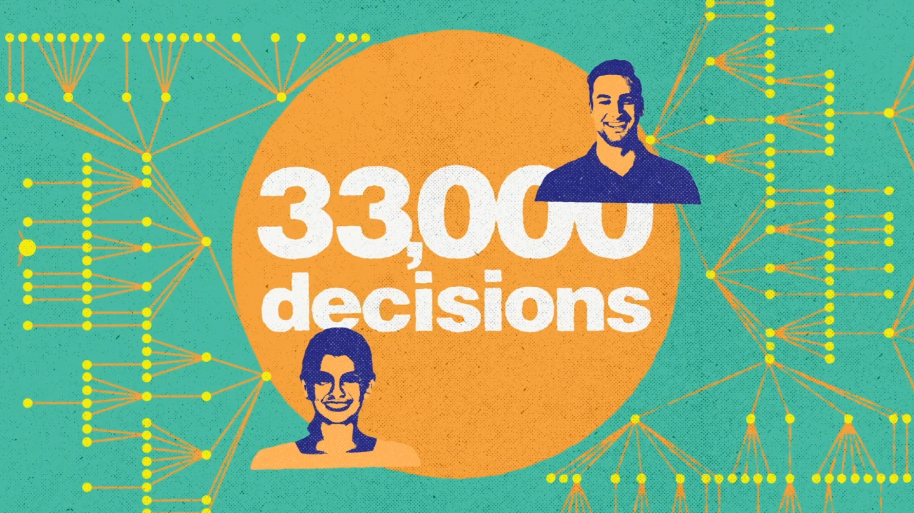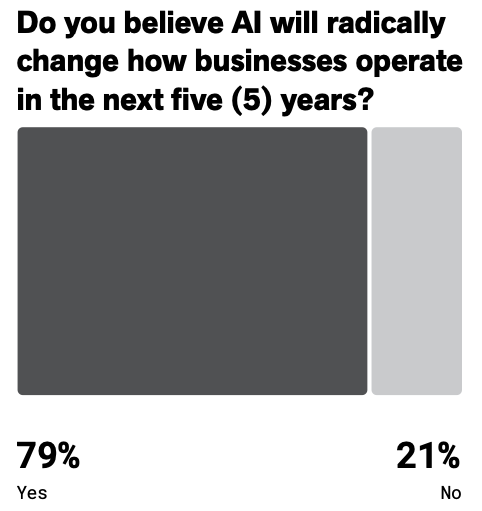Tomorrow’s organizations will be powered by AI, but run by people

Every day, leading companies are finding new ways to use AI and related technologies to operate more efficiently and serve their customers better.
However, despite AI’s transformative impact, these early adopters have discovered a fundamental truth: humans, with their creativity, ingenuity, and other unique skills, are indispensable to their organizations. No matter how advanced AI becomes, people will remain the core of most companies, and will be vital for harnessing the full value of new technologies.
The challenge for executives goes beyond merely adopting AI. It’s just as crucial to create organizational structures that put employees in a position to succeed in an AI-powered environment. Such structures include introducing citizen developer programs, modifying the scope of certain roles, and providing in-demand skills training for employees.
There’s no time to waste—proactive organizations will maximize the value of their workforces in this new era of AI.
Why AI will complement, not replace, humans in the workplace

As powerful as AI is, experts have realized that it can’t replace what humans bring to the table. As McKinsey & Company put it, AI’s “real value lies in augmenting human capabilities, not replacing them.”
AI will continue to improve in the coming years, but the creativity, emotional intelligence, and judgment that only humans can provide will always be in demand. UiPath co-founder and Chief Innovation Officer Daniel Dines expounded on this topic during his FORWARD VI keynote.
I think right now, we need people that can engage in meaningful conversations, can understand empathy, can understand creativity, have imagination. This is what is going to be required in the next era. And I think the most important one is something that makes us deeply human, and that’s our ability to make a distinction between what's true and what's untrue…AI is not going to help in this task. In the era of prevalent AI everywhere, we have to provide what’s true and untrue.
Daniel Dines, co-founder and Chief Innovation Officer, UiPath
Humans and AI are better together—the combination of AI's analytical power and human insight leads to better outcomes than either could achieve alone. Yet, despite the benefits, few executives have made meaningful investments in AI. A recent report by Bain & Company showed that, while 79% of corporate leaders believe AI will “radically change” how their businesses operate in the next five years, current “investment levels are quite low” relative to the size of the surveyed companies.
So, what’s keeping companies from fully embracing the technology?
According to UiPath Chief Marketing Officer Bobby Patrick, it’s a combination of “skepticism, concern, and lack of preparation.” Executives fear that their employees aren’t properly trained in using AI, and many also doubt its economic impact due to sluggish adoption.
Forward-thinking leaders aren’t letting these concerns stop them. Increasingly, they’re recognizing that automation is the key to overcoming these hurdles and unlocking the power of AI today (not two years from now).
Automation is the best path to realize the opportunities ignited by AI
By acting as the ‘muscle’ that allows organizations to operationalize the ‘brain’ of AI, automation bridges the gap between aspiration and AI implementation. Firms such as freight brokerage Total Quality Logistics (TQL) have achieved impressive outcomes by leveraging this powerful combination.
Trust is fundamental to TQL’s business, which makes humans their most important resource. “Transportation can be a parade of problems. Our job is to thrive in moments of chaos,” said Julia Fulton, Corporate Communications Manager at TQL. When things are going wrong, customers don’t want to talk to a robot—they want a real person to help them sort out the issue. “For our people to focus on service, we needed automation,” Fulton said.
By using their own machine learning (ML) models in tandem with The UiPath Business Automation Platform, TQL enabled its employees to make 33,000 decisions per day in less time, which has given them more bandwidth to support customers. This combination also helps them gather and analyze data to accurately create customer quotes.
While automation is the path to realizing true value from AI, it’s only one piece of the puzzle. To succeed in the new era, executives must prioritize empowering employees with the skills and support they need through targeted training programs and reorganization.

How to put your people in a position to succeed in the AI age
Organizations leading the way in adopting AI-powered automation have several recommendations for putting your people in a position to succeed.
Use citizen development programs to boost employee familiarity with AI
Citizen development programs create tangible value for companies in all sorts of ways, including greater automation capacity and a broader pool of automation ideas. But the harder-to-measure benefits are also important, such as increasing employee comfort and familiarity with AI-powered automation.
Since citizen developers are both users and evangelists of AI-powered automation, they’re a great resource for preparing a workforce for the broad changes associated with AI. Maxim Ioffe, Director of Global Intelligent Automation at Wesco, saw “every citizen developer as an automation ambassador” that helped promote the use of and comfort with new technologies throughout his company.
Get the e-book: Lessons learned from successful citizen developer programs
Redefine roles and team structures as necessary
According to the same report by Bain & Company, the bulk of the ROI from AI-powered automation comes when organizations use efficiency gains to redeploy people and resources into growth areas. Boston Consulting Group (BCG) also noted that “AI offers the chance to rethink roles and focus human talent where it makes the biggest impact."
As software robots take on increasingly complex tasks, employees will experience varying degrees of change in their work schedules.
Many employees who gain significant time back can use it to create more value within their existing roles. For example, the finance team at Canon USA automated much of their invoicing process via the UiPath Platform, and now uses that time to talk with suppliers and help other departments create their own automations.

But in some cases, organizations can maximize their employees’ talents by moving them to different areas altogether. For instance, the automation center of excellence (CoE) within telecommunications group Orange Spain grew from 13 full-time employees to more than 100. They call it the Robot Factory, and many of its employees came from elsewhere in the company.
Moreover, AI has the potential to help managers become better leaders. Research from McKinsey found that the average manager spends less than 30% of their time on people leadership, with the rest being spent on individual or administrative tasks. Nearly half of the latter tasks have the potential to be automated, freeing managers to spend more time training and leading their teams. This will require changes in manager performance assessments and more leadership training to reflect their modified roles.
Ultimately, companies that maximize the benefits of AI proactively think about how and where to harness their employees’ potential.
Create training programs for in-demand skills
As with any new technological era, employees need to learn new skills to maximize the benefits of the new technology. In the First Industrial Revolution, factory workers had to learn how to use steam-powered machines. A century later in the Third Industrial Revolution, computer skills became a must-have.
Many experts believe we’re now in the Fourth Industrial Revolution, which will require AI-related skills like prompt engineering and large language model (LLM) management. Brandon Deer, Chief Strategy Officer at UiPath, noted that “providing dedicated training services to ensure effective and safe use of LLMs will allow for faster deployments and results. Cross-department training will also ensure trust, security, and maintenance of the technology are an enterprise-wide priority."
MIT also said that “explaining when to question these tools—along with teaching employees…how to prompt them to give the answer they’re looking for—is very much the next hill to climb with AI."
When thinking about your AI-powered automation rollout, employee training programs should be prioritized alongside the implementation of AI-powered tools.
Organizations will look different in the AI era, but people will remain their heart and soul

Source: Bain & Company, "The State of AI-Powered Automation"
In the best cases, the fusion of AI and human ingenuity in the workplace will unlock new capabilities we can’t yet imagine. This includes a stronger bottom line—according to Thomson Reuters, "we will see record levels of profitability at both firm and individual level as AI creates demand and frees up time for specialist high-value expertise.”
But rolling out AI-powered automation isn’t enough. To set their people up for success in the AI age, tomorrow’s leading companies are beginning the work of redefining how their employees work today.
To learn more about how to bring the power of AI into your organization, join us at the UiPath AI Summit.
Director, AI Product Marketing, UiPath
Get articles from automation experts in your inbox
SubscribeGet articles from automation experts in your inbox
Sign up today and we'll email you the newest articles every week.
Thank you for subscribing!
Thank you for subscribing! Each week, we'll send the best automation blog posts straight to your inbox.


